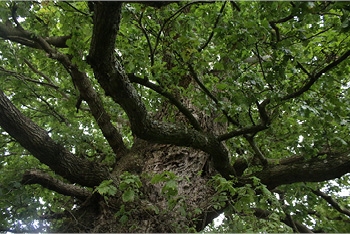Tree of the Month: Pedunculate Oak
September 2024 – Pedunculate Oak (Quercus robur)
Each month we’re going to bring you a profile of one of the UK native tree species being planted in the Silk Wood Community Planting Project. For September it’s the pedunculate oak (also known as common or English oak).
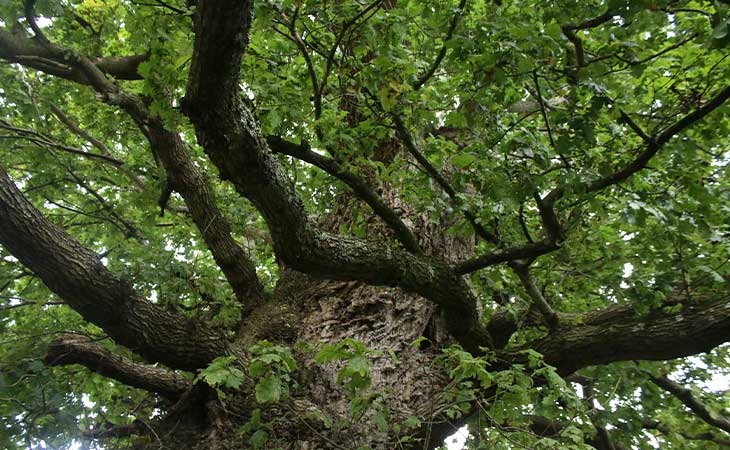
Few trees are as important to wildlife as the common oak – supporting over 2,300 different species, more than any other native UK tree. This includes 65 species of mosses & liverworts; 300 species of lichen; 3/4 of the 18 UK bat species that roost in trees; over 200 moth caterpillar species including oak beauty, oak hook tip, green oak tortrix and lobster moth; purple hairstreak butterfly; gall wasps that produce the marble gall, oak apple and spangle gall; oak bark beetle and all the various other birds, fungi, mammals and invertebrates that rely on oaks for food and shelter.
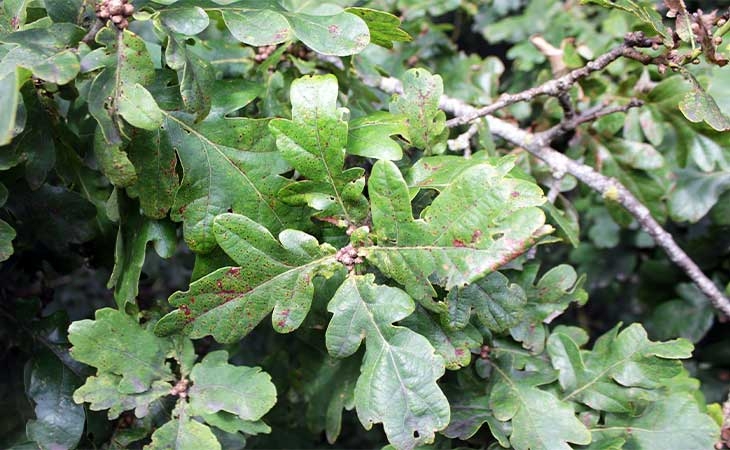
Oaks can live up to (and perhaps beyond) 1,000 years, grow 20-40 metres, and the timber has been used for centuries for constructing houses, ships, barrels and furniture. The bark was highly prized from Roman times right through to the 20th Century for its tannin – a key ingredient in the production of leather goods, and you’d often see whole trees stripped of the bark before the timber was used elsewhere.
This time of year, you’ll start to notice acorns developing – these are a valuable food source for many mammals such as deer, badgers, foxes, squirrels and mice, as well as birds such as jays, nuthatches and wood pigeons. Acorns were also collected to grind into flour for bread making.
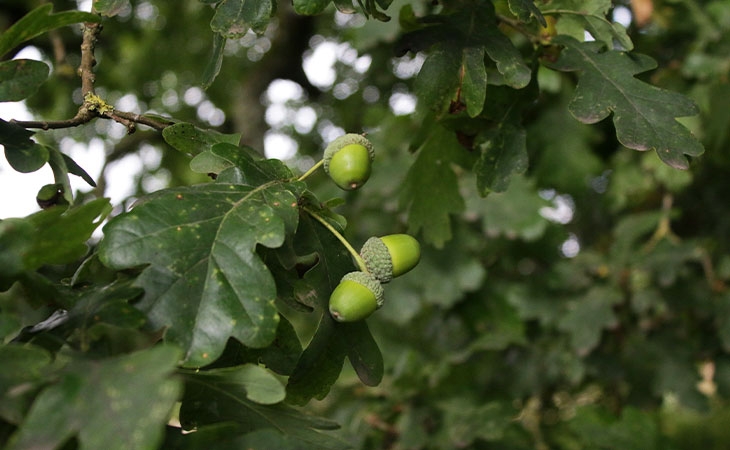
Many woodlands were used to graze animals in (known as wood pasture) – so pigs were often introduced through autumn to feed on the fallen acorns. This was because acorns are poisonous to other types of livestock such as sheep and horses, so the pigs would clear the forest floor. This was known as ‘pannage’ and is still practiced in the New Forest to make it safer for the ponies that roam free there.
Being a favourite food for all these animals does increase the chances of acorns being spread about and buried, resulting in oak seedlings springing up naturally in areas such as natural regeneration projects where planting isn’t as appropriate. In fact, we’ve already seen plenty of tiny oak’s appearing on the Community Woodland site.
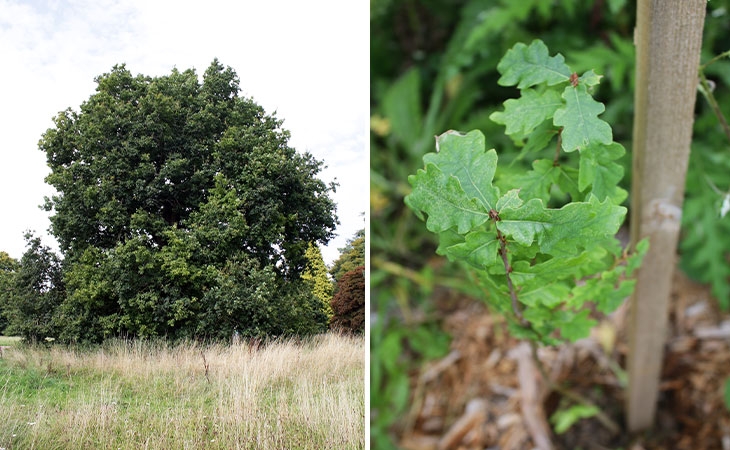
So, hats off to the English oak, a real super species!
We’ve also planted the sessile oak (Quercus petraea) on site, whose main differences to look for include no stalks on the acorns, much longer leaf stalks and shallower lobes on the leaves.
